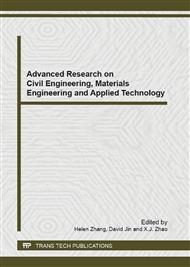p.3
p.7
p.11
p.15
p.19
p.23
p.28
p.33
Experimental Study on the Solidification of MSWI Fly Ash
Abstract:
This paper studied the characteristics of MSWI fly ash. Using cement and lime as a binder for the fly ash treatment effect has carried out in the experimental research. This study analyzed the fly ash solidification process and the best process parameters by using cement and lime and discussed the binder curing fly ash and its mechanism in the fly ash behavior. This paper provides a valuable reference for the further study on the harmless treatment of MSWI fly ash.
Info:
Periodical:
Pages:
3-6
Citation:
Online since:
December 2013
Authors:
Price:
Сopyright:
© 2014 Trans Tech Publications Ltd. All Rights Reserved
Share:
Citation:


